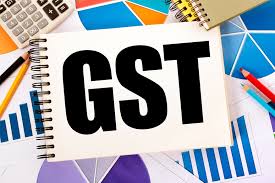Excess money in cash ledger refundable even two yrs after paying GST: CBIC
Those who have excess money lying in the cash ledger for the purpose of paying goods and services tax (GST) would be able to take it out even after two years of the date of paying tax, a move that would ease the cash flow of the companies. Currently, assessees cannot take the refunds of this money after two years. That time bar has been lifted by the government.
The Central Board of Indirect taxes and Customs (CBIC) has issued necessary clarifications in this regard.
A taxpayer claiming refund under GST is required to file a refund application to the GST authorities within the two years from the ‘relevant date’. Generally, the relevant date is the date of payment of tax. But in case of exports, it is the date on which a ship or aircraft leaves India.
Under GST, the taxpayer is first required to deposit cash into the electronic cash ledger (ECL) maintained on the GSTN portal. This cash balance lying in ECL can be utilized by the taxpayer against their tax liability reported in GST returns.
Practically, one may notice that there exist cases where taxpayers have deposited excess amounts in their ECL which could not be utilized against any tax liability.
At times this amount may remain in ECL for more than 2 years.
Field officers were rejecting refund applications relating to such amounts lying in ECL arguing that two years have been lapsed and thus such an amount cannot be available as refund to the taxpayer, Sunil Kumar, deputy general manager at Taxmann, said.
In this backdrop, the CBIC has issued a clarification that the limitation period of two years will not be applicable for refund of excess balance lying in ECL.
“The refund clarifications are useful as the same is likely to improve working capital management for dealers with excess balance in electronic cash ledgers. Such dealers thus far, were unable to use alternatively the excess balance in their electronic cash ledgers” said Harpreet Singh, Partner at KPMG India
Rajat Mohan, senior partner at AMRG & Associates, said the move will help in easing cash flow of companies.
Kumar said CBIC seems to have taken the view that the amount deposited in ECL does not carry the character of tax.
He, however, said the clarification does not specify whether the move would be applicable to disputed cases in courts.
"The CBIC view would also be beneficial for the ongoing litigations relating to excess payment of tax under various cases such as amount paid during investigation stages, amount wrongly paid by the taxpayers, levy which later held as unconstitutional by the judiciary. It can be argued that the limitation period will not be applicable in these cases too," he said.
In a similar pattern, CBIC also clarified that assessees are entitled to get refund of money lying in ECL due to tax deducted at source (TDS) or tax collected at source (TCS) under the GST regime. TCS could be levied if someone uses an ecommerce platform for selling its goods. TDS and TCS could also be levied if a company is dealing with the government.
Kumar said the tax department was rejecting the refund applications relating to such accumulation, saying that it’s not a cash deposited by the taxpayer and thus refund may not be available. Till now, this amount can only be utilized against the tax liability.
Kumar said since this money is treated at par with the cash deposited, one may also take a view that a two year time bar would also not be applicable in this case.
QR Code
CBIC also clarified that those making payments outside but place of supply is in India are not required to have dynamic QR code on their invoices.
Harpreet Singh of KPMG explained that for transactions which do not qualify as exports, as the place of supply is in India, but the recipient is outside India, the requirement of printing QR code was not serving the intended purpose.
“This is because QR code is mandated by the government so that consumers/ recipients of services can pay through digital modes which makes it easy for authorities to track the supplies. But where the recipient of service is outside India, the QR code would not be used for making payments and hence it is good that requirement of printing QR code on such invoices has been done away with,” explained Singh.\\
Source:https://www.business-standard.com/article/economy-policy/excess-money-in-cash-ledger-refundable-even-two-yrs-after-paying-gst-cbic-121111801017_1.html
Download our App to get knowledge updates: https://play.google.com/store/apps/details?id=com.app.gstmitra
Join Our Telegram Channel for more updates:https://t.me/praveengst



Comments
Post a Comment